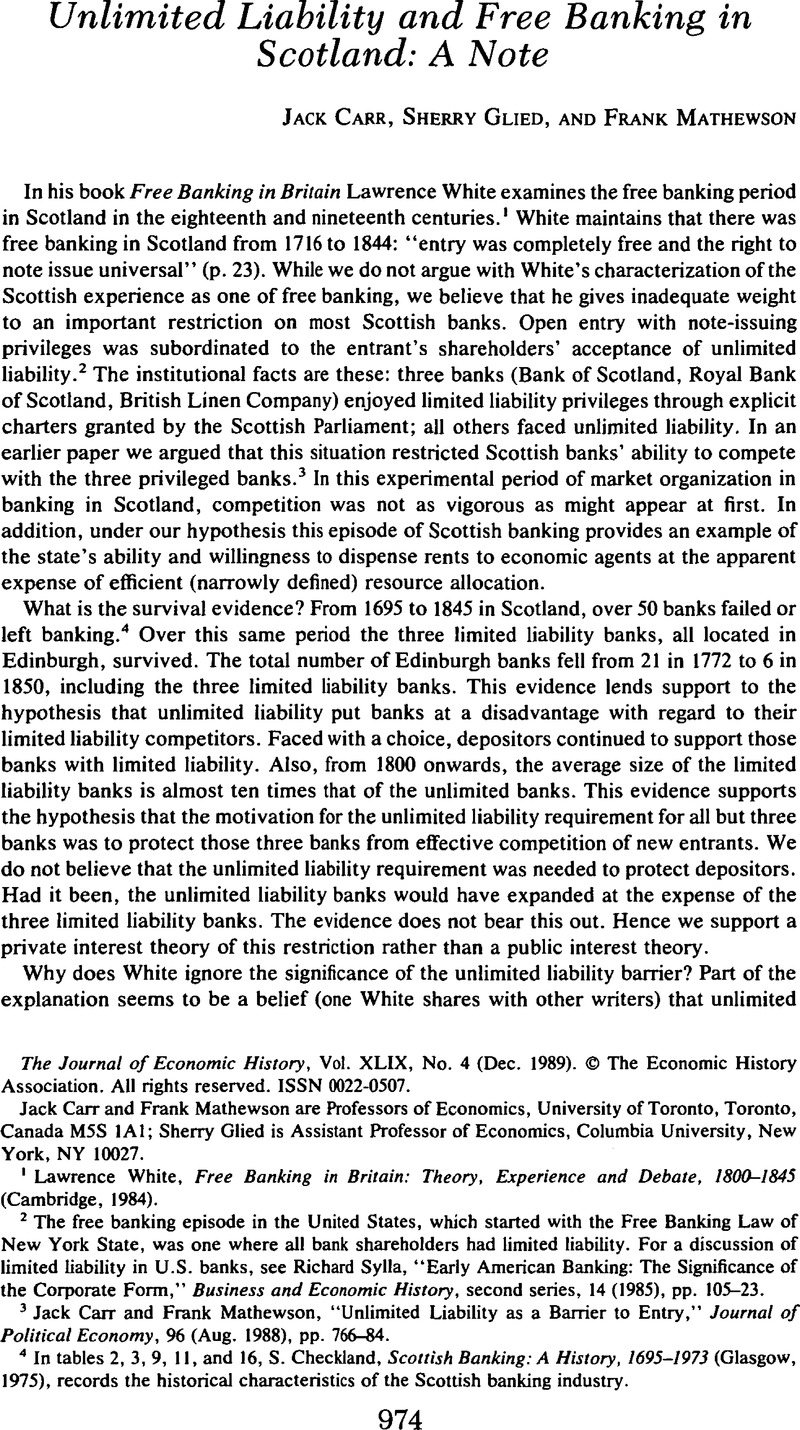Published online by Cambridge University Press: 03 March 2009

1 White, Lawrence, Free Banking in Britain: Theory, Experience and Debate, 1800–1845 (Cambridge, 1984).Google Scholar
2 The free banking episode in the United States, which started with the Free Banking Law of New York State, was one where all bank shareholders had limited liability. For a discussion of limited liability in U.S. banks, see Sylla, Richard, “Early American Banking: The Significance of the Corporate Form,” Business and Economic History, second series, 14 (1985), pp. 105–23.Google Scholar
3 Carr, Jack and Mathewson, Frank, “Unlimited Liability as a Barrier to Entry,” Journal of Political Economy, 96 (08. 1988), pp. 766–84.CrossRefGoogle Scholar
4 In tables 2, 3, 9, 11, and 16, Checkland, S., Scottish Banking: A History, 1695–1973 (Glasgow, 1975), records the historical characteristics of the Scottish banking industry.Google Scholar
5 In contrast, Blair, Alexander, Some Observations Upon the Present State of Banking (Edinburgh, 1841), believed in the efficiency of limited liability for banks.Google Scholar
6 White may have been relying on Checkland for this evidence. “The Company Acts had made limited liability available to business enterprises generally. The banks in Scotland… had made no move to adopt it, preferring that the obligation should continue to rest on shareholders; they felt that such a step would reduce public confidence in them and so harm their business.Google Scholar Even after the debacle of 1878, the Scottish banks were still reluctant to limit liability to subscribed shares” (Checkland, Scottish Banking, p. 480).Google Scholar
7 Carr and Mathewson, “Unlimited Liability as a Barrier to Entry.”Google Scholar
8 A similar observation was made by Mill, John Stuart, “Testimony” in Report from the Select Committee on Investment for the Savings of the Middle and Working Classes, vol. 19 (London, 1951): “I think that the great value of a limitation of responsibility, as relates to the working classes, would be not so much to facilitate the investment of their savings, not so much to enable the poor to lend to those who are rich, as to enable the rich to lend to those who are poor.”Google ScholarMore recently, Woodward, Susan, “Limited Liability in the Theory of the Firm,” Journal of Institutional and Theoretical Economics, 141 (12. 1985), pp. 601–11, has examined the transactions motive for limited liability.Google Scholar
9 See Cameron, Rondo, Banking in the Early Stages of Industrialization (New York, 1967), p. 66, table 111.1.Google Scholar